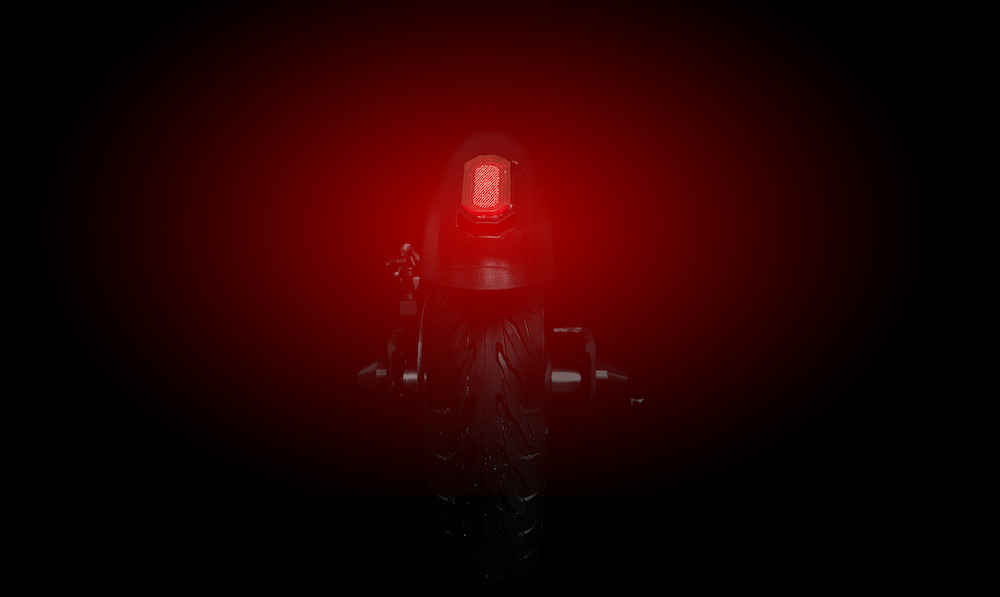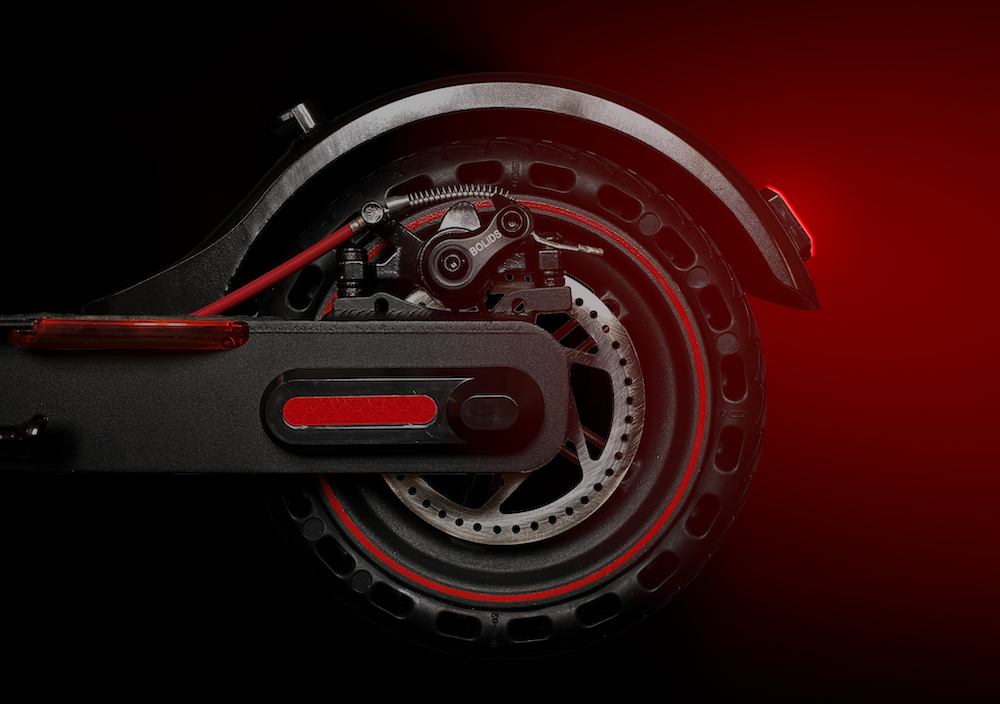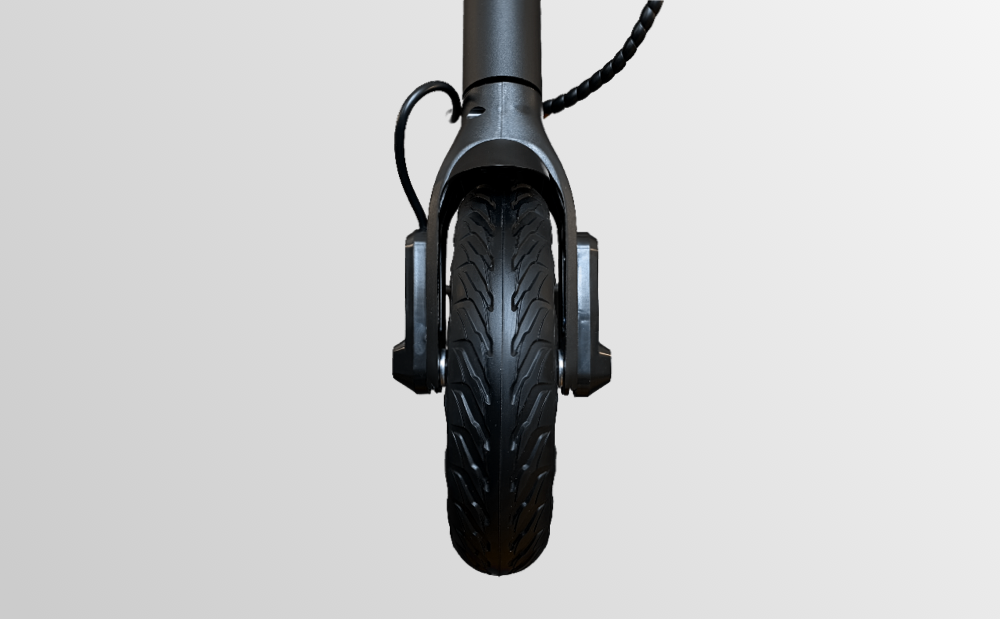Staying Safe on E-Scooters
Chelsea Davis
Nov 25 2020 · 4 min read
Stay safe on your electric scooter with our quick guide.
Right now in the middle of a pandemic, there's lots of talk about staying safe. We're going to change the topic slightly, and make it all about our favourite thing in the world: electric scooters. What are some of the simple things you can do to stay safe when riding e-scooters?
Your Scooter
It all starts with the scooter that you ride. There are certain things you should be looking for on a scooter, especially one you plan on riding in the UK.
Visibility
Being seen by others is arguably one of the most important factors. Bright front and rear lights are a bare minimum, and side reflectors are an important addition to make you seen from the side. A lot of e-scooters feature slick black or dark grey designs, so without these sort of safety devices, they can be very hard to see in low light.
Before you ride your scooter, you should always make sure that your lights work and any reflective strips are clean from dirt and dust. Some scooters also feature a rear brake light, that illuminates when using the brake, even when the lights aren't permanently switched on. Look for a scooter that features as many of these safety designs as possible. The 9 Pro Edition covers you on all these counts, keeping you safe in British low light conditions.
With dark scooters, lights are critical if you want to stay safe in low light.
Brakes
When you can reach speeds of up to 15mph (25km/h) you need a reliable way of stopping. E-Scooter models feature a variety of brake types:
Disc
These are usually triggered by a mechanical level through a cable system, although you may see hydraulics used instead of a cable. Because these don't rely on any electronics, they are extremely reliable and usually easy to maintain. On top of this, they're very lightweight and provide excellent braking power. The 9 Pro Edition uses a mechanical disc brake on its rear wheel. The calliper used to grip the spinning rotor on the wheel should be inspected regularly as well as the rotor itself. Since these are both exposed to the elements, they're at most risk of damage.
Disc brakes operate by a mechanical calliper gripping a spinning metal rotor attached to the wheel.
Drum
These brakes are fully enclosed within the wheel and when braking, push pads against the inside of the wheel drum to reduce the speed of the spinning wheel. They're generally heavier than other systems and achieve lower braking power. On the other hand, being fully enclosed means they aren't susceptible to wet weather and don't need as much maintenance as a disk brake.
Foot
Usually seen on slower-speed push scooters, foot brakes work by stepping on the rear fender so that it comes into contact with the spinning wheel. These are one of the weakest types of brakes and you'll rarely see these on electric scooters. A lot of the time people will mistakenly assume that their scooter has a foot brake when it doesn't. This can be disastrous though, as any wiring for the rear brake will run through the inside of the fender. Over time, applying the wiring to the spinning wheel can fray and sever the rear light connection.
Regenerative/Electronic
There's very little difference between regenerative and electronic braking systems. Both use the resistance in the motor to slow the wheel rotation, but only regenerative braking provides energy back to the battery. A scooter only equipped with this type of braking will provide poor stopping power, but combined with another brake such as disc or drum, a regenerative braking system can be useful for extending the battery of a scooter.
Tyres
Especially in the UK, having good grip in wet conditions is an important requirement for an electric scooter. Before riding, you should inspect your tyres to make sure they have enough tread left on them. On scooters with air-filled tyres, you should check their air pressure is high enough. Low air pressure can make punctures more likely, which will completely cripple your ride and reduce traction. If you're using tyres with a honeycomb structure, then you don't have to worry about punctures.
Always make sure your tyres have plenty of tread left on your tyres to give you the best control.
Accessories
Once you've sorted out your scooter, there are some final bits and pieces that will help make you much safer on your wheels.
Helmet
Critical for any ride is a helmet. Style shouldn't be a problem with the huge selection of bicycle helmets available online and in retail shops across the UK. In Australia, bicycling fatalities have almost halved since compulsory helmet laws were introduced in the 1990s. We really shouldn't have to say any more about this. Wear a helmet.
Pads
Depending on your risk tolerance, elbow and knee pads might be a good idea. If you were to fall with pads on you'd have a much higher chance of coming off better than the ground. We did some Googling and found a few pairs of decent cycling pads here and here.
Gloves
Whizzing around at 15mph might be fine during the 7 days of Summer that the UK experiences every year, but you'll want something over your hands during colder months. We love these gloves that include special fingertips for using your phone (though you should not be using your phone while riding). As long as you can operate the throttle and brakes, you should be ok.
safety
accessories
scooter care



